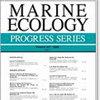Reefs in no-take reserves host more oysters, macroparasites, and macrofauna than harvested reefs across an estuarine salinity gradient
IF 2.2
3区 环境科学与生态学
Q2 ECOLOGY
引用次数: 0
Abstract
ABSTRACT: No-take reserves and habitat restoration are important management tools for reversing the effects of fishing on coastal habitats, associated faunal assemblages, and host-parasite interactions. Populations of the eastern oyster Crassostrea virginica have declined by 99% in areas of Chesapeake Bay, USA, due to overharvesting, disease, and other factors, and are now the focus of extensive restoration efforts. We surveyed subtidal oyster reefs using classic quantitative approaches and emerging videography methods to contrast pairs of harvested reefs and reefs protected in subtidal no-take marine reserves (oyster sanctuaries) in the Choptank, Great Wicomico, and James River tributaries of Chesapeake Bay. Overall, sanctuary oyster reefs contained more intact habitats and communities. Relative to nearby harvested reefs, sanctuary reefs (1) contained higher densities of oysters, (2) held larger oysters of lower condition, (3) hosted stronger oyster-macroparasite (boring sponge [Cliona spp.] and mud blister worm [Polydora spp.]) interactions, (4) had more complex habitat, and (5) supported a greater richness and abundance of macrofauna. Oyster and mobile macrofauna abundance increased with salinity, whereas macroparasite pre-valence peaked at mesohaline (5-20 psu) sites. Our results suggest that restored, sanctuary-protected oyster reefs are beginning to rebound from the effects of >100 yr of intensive harvest, as indicated by increased oyster density, recovery of host-parasite interactions, improved habitat characteristics, and more mobile macrofauna. Additionally, these patterns, observed across the salinity gradient in Chesapeake Bay, reflect a widespread trend in aquatic ecology: relative to fished areas, unfished areas have more complex habitats and communities, larger and higher densities of hosts, and stronger host-parasite interactions.在河口盐度梯度上,禁捕保护区的珊瑚礁比捕捞的珊瑚礁拥有更多的牡蛎、大型寄生虫和大型水底生物
摘要:禁捕保护区和栖息地恢复是扭转渔业对沿海栖息地、相关动物群落和寄主-寄生虫相互作用影响的重要管理手段。由于过度捕捞、疾病和其它因素,美国切萨皮克湾地区的东部牡蛎 Crassostrea virginica 种群数量减少了 99%,目前正在进行广泛的恢复工作。我们采用传统的定量方法和新兴的摄像方法对潮下带牡蛎礁进行了调查,将切萨皮克湾 Choptank、Great Wicomico 和 James 河支流潮下带禁捕海洋保护区(牡蛎保护区)中被捕捞的牡蛎礁和受保护的牡蛎礁进行对比。总体而言,保护区的牡蛎礁拥有更完整的栖息地和群落。与附近被捕捞的礁石相比,保护区的礁石(1)包含更高密度的牡蛎,(2)容纳更大的牡蛎,且牡蛎的状况较差,(3)容纳更强的牡蛎-大型寄生虫(钻孔海绵[Cliona spp.]和泥疱虫[Polydora spp.])相互作用,(4)具有更复杂的栖息地,以及(5)支持更丰富的大型动物。牡蛎和移动大型底栖生物的丰度随盐度的升高而增加,而大型寄生虫的前期valence则在中盐度(5-20 psu)的地点达到顶峰。我们的研究结果表明,经过恢复、受保护区保护的牡蛎礁正开始从 100 年密集捕捞的影响中反弹,表现为牡蛎密度增加、寄主与寄生虫之间的相互作用恢复、栖息地特征改善以及大型底栖动物的移动性增强。此外,在切萨皮克湾盐度梯度上观察到的这些模式反映了水生生态学中的一个普遍趋势:相对于捕捞区,未捕捞区的栖息地和群落更为复杂,宿主的规模更大、密度更高,宿主与寄生虫之间的相互作用也更强。
本文章由计算机程序翻译,如有差异,请以英文原文为准。
求助全文
约1分钟内获得全文
求助全文
来源期刊

Marine Ecology Progress Series
环境科学-海洋学
CiteScore
5.30
自引率
8.00%
发文量
238
审稿时长
3 months
期刊介绍:
The leading journal in its field, MEPS covers all aspects of marine ecology, fundamental and applied. Topics covered include microbiology, botany, zoology, ecosystem research, biological oceanography, ecological aspects of fisheries and aquaculture, pollution, environmental protection, conservation, and resource management.
 求助内容:
求助内容: 应助结果提醒方式:
应助结果提醒方式:


